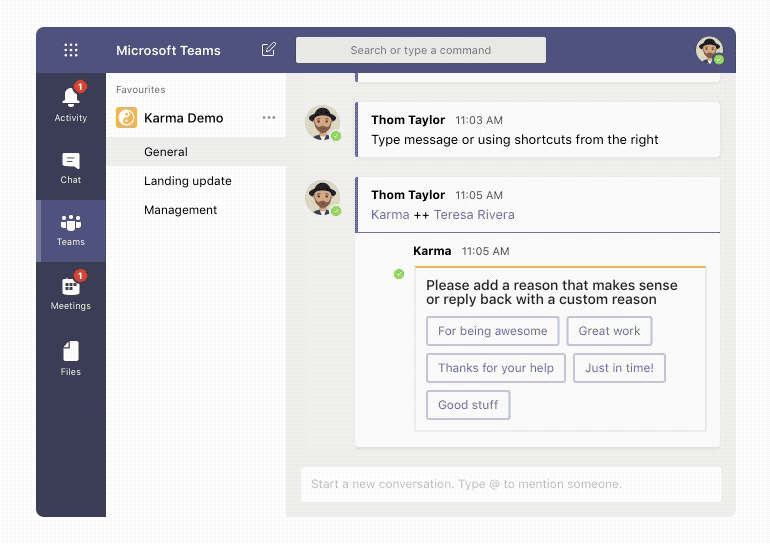It is a shocking statistic. According to Deloitte, 43% of millennials see themselves quitting their current job within the next 2 years.
If you employ a majority of Gen Z staff — watch out — 61% plan to leave within 24 months.
Have a quick look around you in the office. Count out ten co-workers, and imagine the impact of 4 people walking out the door the next moment.
Consider the challenge of 40% of the expertise, or passion, or company culture leaving your workplace. Millennials see themselves moving on from your team.
Why?
Why do millennials want to quit?
People have two basic questions when they come to work;
- Will this job help me survive?
- Will this job help me thrive?
We often ignore the survival question. Surviving is about safety, security, and food on the table. We all want to know that our work will consistently pay us an agreed amount so we can have security at night while we sleep.
Pay is our first concern with a new job out of university because we seek survival.
Once pay is generally taken care of, we begin to analyse whether we are living a thriving life or not.
We’ve got food and shelter, so we begin to look at how beautifully we design our shelter. Or the flavour and appearance of our food. Or the design of the restaurant where we purchased our beautiful dinner.
We start to save for a vacation in Hawaii, a house in the suburbs, and a faster, sleeker car to impress our friends.
Our survival money is invested in the pursuit of a thriving life.
The Millennial generation is the poster-child for focusing on a thriving life.
The massive increase in blogging, self-help, Pinterest boards, and aromatic bath-soap guaranteed to make you feel better all point to a generation seeking to thrive.
What makes people thrive? At home, at work, in leisure, what keeps us buoyed about the present and the future?
People thrive when they are appreciated, science suggests
Acknowledging and appreciating the work people put into a task is the easy- to-reach foundation for a thriving workforce.
After pay, “a positive workplace culture” is the greatest factor for building loyalty at work. Survival followed by a place to thrive.
In a fascinating study on what makes people feel good at work, Duke University Professor Dan Ariely shows it is not the task they complete, but the appreciation people receive for actually working which produces a positive feeling.
When comparing satisfaction in the workplace, Ariely’s team asked people to keep working on a word-find puzzle for an increasingly smaller amount of money. Basically the idea of ‘how low will you go?’
The team first acknowledged people’s work (control group). They saw the completed word-puzzle and said “Thanks.”
For the next group (Group A), the team shredded people’s puzzles. Buzzz…Straight to the shredder.
Finally, researchers ignored the last group (Group B). No acknowledgement, no shredding, not even a glance in their direction. Just ignore.
The results? Ignoring people’s work is as bad as shredding it in front of their eyes.
How easy is it in our workplaces to ignore the work of others? What does that communicate to co-workers about their value to our organisation?
Acknowledging and appreciating the work people put into a task is the easy-to-reach foundation for a thriving workforce.
Leaders cannot afford to ignore the importance of appreciation.
“After pay, ‘a positive workplace culture’ is the greatest factor for building loyalty at work.”
Forbes emphasises the urgency of appreciation, showing “66% of employees say they would ‘likely leave their job if they didn’t feel appreciated.’” This is a 15% rise on six years ago.
“Among millennials, the number of employees who’d leave if unappreciated jumps to 76%.”
Stop to think about that statistic again.

Of every four Millennials on your team, three will leave when there is a lack of appreciation in the workplace.
We might think an end of year bonus is enough. Perhaps employees will innately gain the satisfaction of a job well done.
We say to ourselves, ’We have an agile project delivery every 2-weeks, of course our team feels they’re succeeding.’ We might even consider perks such as gym membership, barista coffee, and casual Friday afternoon drinks as signs of appreciation.
Appreciation is a conscious act
How often do we see someone do a job, a good job, and never, ever, say anything to them?
If you started work in the 1970s through the 1990s, the worst thing at work was a call into the Boss’ office. It was always bad news; a poor performance, low KPI numbers, or a fault in the system.
At work, you were expected to put your head down, keep your mouth closed, and get cracking on a project.
No news was good news
When Millennials went to school, teachers (Yes, the Gen X and Baby Boomer teachers) educated the Millennial generation to hold new expectations.
Teachers dolled out prizes for participation. Trophies for engagement are not a meme — they are a reality.
‘Good Work, Great Effort, Congratulations for Participation.’
Millennials received an acknowledgement (the Prize) and some appreciation (the Well Done).
Look around your workplace today. How often are co-workers vocalising appreciation? How much intentional acknowledgement of work takes place?
The Millennial generation was raised to look at the positive.
When they don’t hear affirmation about what is done right, Millennials begin believing it is done wrong and disengage.
So, Why do Millennials quit?
Most Millennials quit because they feel no one said thank you. That’s it.
What would your team be like if you introduced more appreciation?
How far would regular acknowledgement of work go toward keeping your staff engaged, connected, and appreciated?
According to Inc., “increasing employee engagement investments by 10 percent can increase company profits by $2,400 per employee per year.”
This is money made easy by helping people thrive at work.
What would you do with $2k per employee extra each year?
Giving appreciation takes only a moment.
In the world of gig economics, flexible time and locations for working, and global collaboration initiatives, we increasingly rely on business chat platforms such as Microsoft Teams, Slack, or Telegram to facilitate team interaction. These platforms centrally hub our activity.
Chats are taking over business world communication. Slack’s growth is probably the best example of the drastic changes happening right now. Remote work is also more and more common: teams are getting less personable and more diverse.
Many teams are wandering into the unfamiliar chat environment not knowing what to do: how to make their employees feel appreciated, keep them motivated, engaged, happy?
New positions such as ‘People Culture Specialist’ are established.
Our in-chat peer appreciation tool, Karma bot, capitalises on existing interactive platforms, such as Slack and Microsoft Teams, allowing users to quickly post affirmative ‘karma’ to a team member in acknowledgement of performance. Simple.
Employees give each other ‘karma’ for work, teams gain real-time data on performance, and everyone begins to thrive a little more.
Individual karma encourages employees to work better and deliver projects faster. Group karma motivates the entire team, improves performance and maximises efficiency. — David Kravitz, COO at Karma bot
Be intentional. Be specific. Offer appreciation.
Don’t make Millennials quit through non-affirmation.
They might outgrow a role, they might go on to change the world, but in the meantime, tell them well-done.
Make it a little easier for great Millennial staff to stick around.
Give a little karma to your team today with Karma bot.
Sources:
Deloitte. (2018). 2018 Deloitte millennial survey. Deloitte Touche Tomatsu Limited.
Economy, P. (2015, May 5). 11 interesting hiring statistics you should know. Inc. Retrieved from https://www.inc.com/peter-economy/19-interesting-hiring-statistics-you-should-know.html
Kravitz, D. (2018, April 25). Karma bot 3.0. Retrieved from https://medium.com/@karmabot/karmabot-3-0-20592411b1ad
Miller, D. (2017). Building a storybrand: Clarify your message so customers will listen. New York, NY: HarperCollins.
TED. (2013, April 10). What makes us feel good about our work? Dan Ariely [Video file]. Retrieved from https://www.youtube.com/watch?v=5aH2Ppjpcho&feature=youtu.be


 Karma Bot for MS Teams Gets Major Update
Karma Bot for MS Teams Gets Major Update